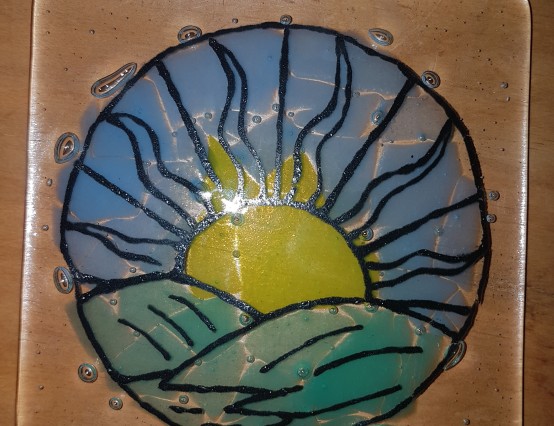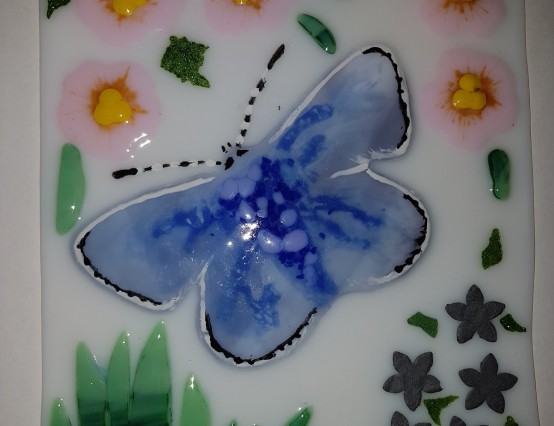Introduction
I have heard from a fellow glass artist that 10 years ago buying dichroic and base glass with which to create beautifully artistic works was an awfully lot cheaper, but how does this affect me as a teenage glass artist who does not have much disposable income of my own with which to buy glass supplies?
According to the Glass Alliance Europe website, in 2008 there was a crisis in the world of glass, caused by global recession. People could no longer afford to buy cars or use industries like engineering which use much of the glass made each year, so in turn the price of glass became higher for glass artists who use less. The glass industry has been in slow recovery since 2009, but glass prices remain high. However, they offer another explanation for this - environmental factors.
Environmental Factors
The Glass Alliance Europe say that Europe is very strict on Carbon Dioxide (CO2) emissions. To make glass, much CO2 can be emitted. This either leads to glass companies being fined or increased costs, trying to find more environmentally friendly ways to make glass.
Www.glassnotes.com suggest it is "best practice" to use recycled glass as it can be cheaper and is better for the environment. However, recycled glass can have flaws because it's been used before, it can be costly to clean it and it has a shorter working time before it hardens, so that can make it difficult. Also, www.warm-glass.co.uk state that for a glass artist like myself who works in dichroic glass, this normally has a different co-efficient (rate of expansion) to ordinary bottle and window glass which is often recycled, known as 'float'. This means that if the 2 are mixed, that cracks and damage can appear in the art works not just in the kiln (although this certainly happens) but slowly afterwards.
The Alternatives
Glass Alliance Europe state that Asian countries such as China have rapidly expanding glass industries. However, particularly in China they seem less constrained by and concerned with, rules concerning CO2 emissions, even if they are fined for their behaviour. Thus, China particularly can produce glassware (tableware etc.) and materials for glass artists for a much cheaper price than the European industries. This has led to glass artist suppliers such as www.fussit.com and direct eBay sellers from China selling supplies at much cheaper costs than European or American manufacturers and suppliers such as www.warm-glass.co.uk, www.bullseyeglass.com or www.cbs-dichroic.com.
My View
I have tried cheaper supplies from China before I realised what their environmental implication was. I use a lot of glass, both for my own art work and in the small workshops I have recently given and it seemed to be a good solution. However, although the coefficients were supposed to be the same as more expensive European and American supplies, I found some of the ones from China did not melt in the same way and instead cracked in the kiln. They generally worked OK being used together, but blending them with my usual supplies led to issues which could not be resolved with further firing. Therefore, although I spent less money on supplies, I wasted my time and money overall.
I'm not sure that I will buy any glass art supplies from China in the future. Although it is likely that I will try and use up ones I have already bought. However, I will probably just use them by themselves, rather than blend them with my expensive materials.
How Expensive Glass Supplies Limit Me Doing The Kind Of Art I want To
Obviously, if cheap Asian supplies were environmentally friendly and worked well with European and American supplies, then this would be amazing, but that is not the case. As a young person with a limit budget to buy supplies I can either spend a little and make larger or more works or make smaller works and use better quality, more expensive supplies. I want to carry on illustrating my poetry etc. in glass, making pictures, but without compromising my integrity and I don't feel I could do this if I bought environmentally unfriendly supplies, at least regularly.
My Future As A Glass Artist And Solutions To This Dilemma For Myself
I hope to remain as a glass artist for many years to come, even if this is not in a professional capacity and it does not become my career after university. Obviously supplies for making very large art works are almost completely unavailable to me financially. Therefore, I have decided that I will carry on buying from my usual UK suppliers, but largely the economy packs of off-cuts which are left over when much larger pieces of glass are cut. That way I can make jewellery and sell this, so I can afford to buy larger pieces for bigger and more complicated art works. I know this does not fully address the wider implications of the rising costs of art glass, but this is the most suitable solution I can find for myself right now.
I have recently contacted www.warm-glass.co.uk and asked them if they stock or have plans to stock recycled glass, which is then coated to make dichroic art glass and they do not because of the coefficient issues and they know of nowhere else in the world that does. Hopefully this is something that art glass manufacturers will manage to achieve in the next few years, for both environmental and cost reasons.
How Does The Rising Cost Of Glass Affect Me As A Young Glass Artist And Why Is This?
How the progressively inflating prices of virgin dichroic glass, affect me as an young glass artist, and why.











That's a very thought provoking piece. I hadn't thought of the environmental costs that glass making produces before.